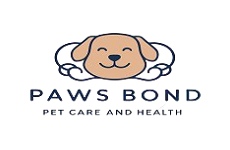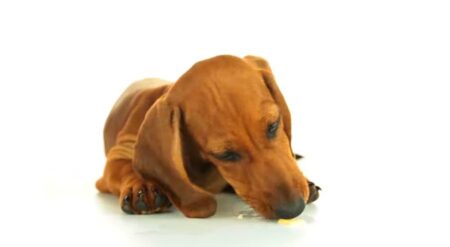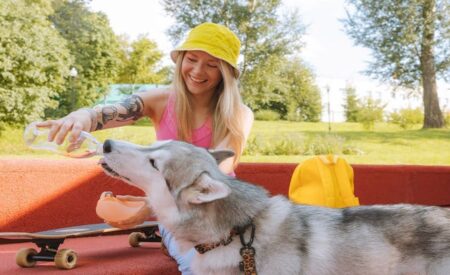For pet owners, training a dog that isn’t driven by food can be a difficult undertaking. Some dogs may not care much about food or treats, even though many dogs are naturally driven by their hunger and react favorably to goodies when given as rewards during training sessions. Because of this lack of motivation, conventional training techniques may not be effective and may need to be modified in order to produce the intended effects.
To properly educate their pets in such situations, pet owners must investigate alternate techniques for reinforcement and motivation. Developing an effective training plan requires an understanding of the underlying causes of the lack of food motivation, such as stress, illness, or diversions. Through the integration of non-food rewards, positive reinforcement techniques, and the resolution of any underlying difficulties, pet owners may effectively engage and motivate their dogs to actively participate in training sessions.
This article aims to assist pet owners in overcoming training obstacles and fortifying their relationship with their furry friends by going over a variety of methods and ideas for teaching dogs who aren’t driven by food.
Why Your Dog Isn’t Responding to Food:
There may be a few reasons why your dog does not respond to food as a motivation. First, make sure they haven’t had too much to eat or indulge in. It’s possible that prior experiences, like being duped with food, have made them cautious about food incentives. Furthermore, your dog may not be hungry right now due to stress or other factors, which might suppress appetite. Dogs that are overweight may also be less motivated by food. Certain breeds are not naturally motivated to eat. Sickness and thirst are other issues to take into account. Try using other treats, make sure your dog has access to plenty of water, and reduce distractions if your dog isn’t interested in food rewards during training. Another powerful incentive is affection and praise. If your canine companion persists in
Ensure They Aren’t Full
Prior to trying to use food as a training incentive, make sure your dog isn’t full. Rewarding people with snacks when they’re not hungry makes them more appealing and useful. To avoid overfeeding, think about holding training sessions prior to mealtimes or utilizing smaller treats. You may increase your dog’s motivation and engagement in actively learning and following orders by making sure they are hungry and responsive to food rewards. During training, this method improves how well food-based rewards shape desired behaviors.
You’ve Tricked Your Dog before with Treats
If your dog has been tricked by goodies in the past, they might have grown wary or less receptive to food rewards during training. Due to their keen sense of perception, dogs are able to rapidly connect particular acts to prior events. In the event that they have previously been duped or mislead with goodies, animals could show resistance or doubt when presented with food incentives during subsequent training sessions. Rebuilding their confidence and getting them to participate in training activities more voluntarily can be accomplished by using positive reinforcement approaches to establish trust and consistency. To promote good communication and fruitful training results, you and your dog must build a solid and reliable relationship.
Your Dog Might Simply Not Be Hungry
The simple reason your dog may not be responding to food-based rewards is that they may not be hungry. Dogs’ appetites can vary throughout the day, just like those of humans. Your dog might not be interested in receiving further food rewards during training sessions if they have just finished eating or have gotten treats. In order to make sure your dog is responsive to food motivation, it’s critical to take into account their feeding schedule and modify training accordingly. You can improve your dog’s involvement in learning activities and the efficacy of food-based rewards by scheduling training sessions around times when your dog is most likely to be hungry.
Your Dog Is Stressed
Your dog may show signs of stress, such as decreased appetite and resistance to participating in activities, such as accepting food rewards. Stress can be brought on by a number of things, including environmental changes, loud noises, and strange circumstances. It’s critical to pay attention to your dog’s behavior and body language for indications of stress, such as panting, pacing, or averting eye contact. Reducing their anxiety and regaining their hunger and motivation can be accomplished by addressing the root causes of stress and creating a soothing and comforting atmosphere. Additionally, during stressful training periods, it could be more beneficial to use different forms of positive reinforcement, such play or compassion.
Your Dog Is Overweight
If your dog is overweight, they may have a decreased interest in food incentives. This could be due to reduced appetite or a lack of motivation stemming from excess weight. It’s essential to manage their diet and weight to ensure optimal health and responsiveness during training sessions.
Certain Breeds Aren’t Food-Driven
Certain dog breeds, such as Afghan Hounds and Basenjis, are noted for having lower levels of food motivation, which may have an impact on how receptive they are to training. It can be helpful to modify training techniques to fit each dog’s unique preferences and look into other sources of motivation, including praise or toys.
Ensure They Aren’t Thirsty
Before trying to use food as a reward, be sure your dog isn’t dehydrated. Dogs need to drink enough water, just like people do, and dehydration can influence a dog’s appetite and ability to respond to food rewards during training. Make sure your dog always has access to fresh water.
Confirm they’re Healthy
Before trying to reward your dog with food, be sure they are healthy. Their appetite and interest in food rewards during training sessions may be impacted by underlying health concerns. Frequent veterinary examinations will assist guarantee your dog’s general health and address any issues that might affect how sensitive they are to food rewards.
How to Train a Dog Not Interested in Food
Although it can be difficult, training a dog who isn’t interested in food is not impossible. Determine substitute motivators first, like playthings, attention, or praise. Try a variety of prizes to see what your dog responds to best. Furthermore, contemplate modifying the training setting to reduce disturbances and enhance concentration. Even if food isn’t your dog’s main source of motivation, you can still increase their responsiveness and involvement by developing a strong bond and trust with them through careful and consistent training sessions. Remain persistent and patient, and acknowledge your little accomplishments along the road.
Experiment with Different Treats
Rekindling your dog’s enthusiasm in training can be accomplished by experimenting with different goodies. To discover what excites your dog, try providing a range of goodies with distinct flavors, textures, and scents. While some dogs might enjoy crunchy treats, others could favor soft, chewy ones. To boost motivation, think about offering high-value snacks like cheese or grilled chicken. You can find out what really motivates your dog and use that to reinforce desired actions during training sessions by providing a variety of options. To ensure that your pet is eating a nutritious diet, don’t forget to give treats occasionally.
Ensure Your Dog Has Enough Water
Throughout the day, make sure your dog has access to an ample supply of clean water. Your dog’s general health and well-being depend on getting enough water, and dehydration can impair their appetite and motivation during training. Make sure your dog’s water bowl is always full and accessible.
Prevent Distractions
To keep your dog interested and concentrated throughout training, it’s imperative to eliminate distractions. Toys, other animals, and loud noises should all be removed from the training area, which should be calm and comfortable. This will support your dog in continuing to pay attention and obey your directions.
Offer Praise and Affection
Training a dog requires lots of love and praise, especially if they aren’t driven by food incentives. When your dog exhibits desired actions, praise them with a cheerful and upbeat tone of voice. Give them physical affection as well, including belly massages, caressing, or light scratching behind the ears. Dogs love attention from their owners and thrive on positive reinforcement. You may encourage your dog to keep learning and following instructions while also fortifying your relationship with them by showing them love and appreciation throughout training sessions.
Use Non-Food Rewards
To encourage your dog during training, use non-food prizes in your lessons. As a reward for desired actions, think about offering toys, playtime, or access to preferred activities. Non-food rewards can be just as useful as treats in keeping your dog interested and excited throughout training. They also offer diversity.
Eliminate Disturbances
Eliminate distractions from the training area to improve your dog’s ability to concentrate. This include putting away things that could distract, turning off TVs and radios, and making sure that other dogs are kept in a different room. During training sessions, your dog will be more attentive and receptive in a calm and regulated setting.
Assess Their Mood
It’s critical to gauge your dog’s emotional state during training. Watch out for symptoms like panting, pacing, or averting eye contact that indicate tension, worry, or discomfort. By being aware of your dog’s emotional condition, you can modify your training methods and make sure they have a happy and successful learning experience.
Check for Health Issues
It’s crucial to make sure your dog is healthy before beginning training. The following list can assist you in looking for any possible health problems:
1.Observe any indications of fatigue or low energy.
2. Keep an eye on any changes in your drinking or appetite.
3. Keep an eye out for any strange actions or signs, like frequent scratching or limping.
4. Look for indications of pain or discomfort, such as cries of distress or reluctance to move.
5. Arrange routine veterinary examinations to address any underlying health issues.
6. Sustain general health and wellbeing by adhering to a healthy diet and regular exercise routine.
7. Remain alert for any changes in your dog’s demeanor or appearance, and seek professional advice if required.
Use Praise and Petting as a Reward
During training sessions, use praise and stroking as incentives to help your dog repeat desired behaviors. Give moderate patting, belly rubs, or scratches behind the ears in addition to verbal praise delivered in a cheerful manner. Positive reinforcement works wonders on dogs, and loving actions from their owners are strong inducers. You may encourage your dog to actively participate in learning and obeying directions while also fortifying the relationship between you and them by include praising and petting in your training regimen.
Summary
Teaching a dog that isn’t motivated by food can be difficult, but it is doable with the appropriate strategy. Make sure they’re healthy first, then take care of any underlying problems that might be affecting their response. Try a variety of incentives, including toys, playtime, or praise, to see what works best for your dog. Additionally, eliminate distractions to create a training setting that is peaceful and concentrated. To reward desired behaviors, use positive reinforcement strategies like affection and praise. Throughout the training process, be patient, consistent, and aware of your dog’s requirements and mood. You should also acknowledge and praise any improvement made along the route.










